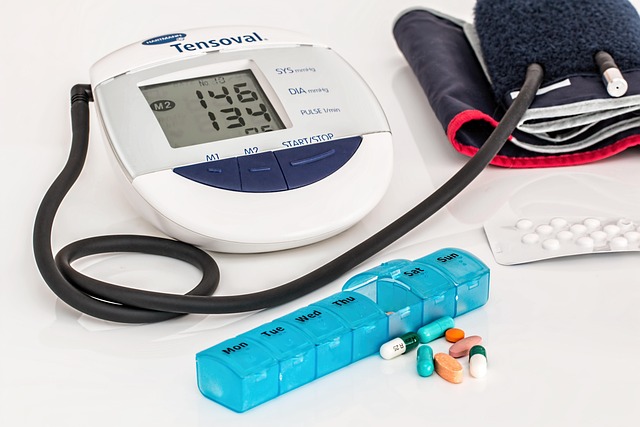Top Abs Training Tips for Better Results
Strong abdominal muscles are essential not only for appearance but also for overall health, posture, and physical performance. Many people search for quick ways to get six-pack abs, but the truth is that effective training requires consistency, proper technique, and a balanced approach to fitness. In this article, we explore the most effective exercises for targeting the abs, how to safely integrate them into your workout routine, and tips for avoiding common mistakes. You will also learn why nutrition and rest play a critical role in visible results. By following these practical and realistic guidelines, you can achieve lasting progress without injury or false promises.

Understanding Core Anatomy for Better Workouts
The abdominal region consists of multiple muscle groups that work together to stabilize your spine and transfer force between your upper and lower body. The main muscles include the rectus abdominis (the “six-pack” muscles), the internal and external obliques (side muscles), and the transversus abdominis (the deep core stabilizer). Effective abs workouts target all these muscle groups through various movement patterns. Compound exercises like planks engage the entire core system simultaneously, while isolation movements like crunches focus more specifically on the rectus abdominis. By understanding this anatomy, you can design workouts that comprehensively develop your abdominal region rather than overworking one specific area.
Essential Home Fitness Training for Abs Without Equipment
Home fitness training offers convenience and consistency for abs development without requiring expensive equipment. Bodyweight exercises form the foundation of effective home abs training routines. The classic plank and its variations (side planks, plank jacks) build isometric strength throughout the entire core. Mountain climbers combine cardio benefits with dynamic core engagement. For lower abs focus, reverse crunches and leg raises can be performed using just a mat or carpeted floor. Even challenging movements like hollow holds require no special equipment while intensely activating the deep abdominal muscles. Consistency remains key – a 10-15 minute abs circuit performed 3-4 times weekly at home can deliver significant results when maintained over time.
Progressive Overload Principles for Six-Pack Development
Like any muscle group, abdominal muscles respond to progressive overload – the gradual increase of stress placed on the body during exercise. Simply repeating the same abs routine with the same intensity won’t continue producing results after initial progress. To develop defined abs, you must continuously challenge your core muscles through increased resistance, volume, or movement complexity. Adding weight to exercises (weighted sit-ups or Russian twists), increasing reps or sets, shortening rest periods, or advancing to more difficult variations (standard plank to weighted plank to long-lever plank) creates the stimulus needed for muscle growth and definition. This progression approach prevents plateaus while maximizing development of your abdominal muscles over time.
Nutrition Guidelines for Revealing Abdominal Definition
Even the most effective abs training program will produce limited visual results if abdominal muscles remain hidden beneath a layer of body fat. Nutrition plays a crucial role in revealing abdominal definition. Creating a moderate caloric deficit through a combination of reduced calorie intake and increased physical activity helps reduce overall body fat percentage. Focus on consuming lean proteins (chicken, fish, tofu), complex carbohydrates (whole grains, vegetables), and healthy fats (avocados, nuts, olive oil). Adequate protein intake (typically 1.6-2.2g per kg of bodyweight) supports muscle maintenance during fat loss phases. Proper hydration improves workout performance and metabolic function. Remember that spot reduction is physiologically impossible – overall fat loss through consistent nutrition is required to reveal abdominal muscles, regardless of how developed they are.
Safe Approaches to Accelerate Abs Development
While developing visible abs takes time, certain evidence-based strategies can safely accelerate progress. High-intensity interval training (HIIT) efficiently burns calories while simultaneously engaging core muscles when performed properly. Circuit training that alternates between different abs exercises with minimal rest maximizes metabolic demand and time efficiency. Incorporating instability elements like stability balls or BOSU balls increases muscle activation during standard exercises. For those with adequate fitness levels, adding anti-rotation movements (pallof presses) and rotational exercises (medicine ball throws) develops functional core strength while enhancing definition. Recovery remains essential – scheduling 48 hours between intense abs sessions allows muscle repair and growth to occur.
Most Effective Abs Training Exercises by Fitness Level
Selecting the right abs exercises based on your current fitness level ensures optimal progress while minimizing injury risk. The table below categorizes effective movements by experience level:
| Experience Level | Recommended Exercises | Target Areas | Weekly Frequency |
|---|---|---|---|
| Beginner | Standard Planks, Modified Crunches, Dead Bugs | General Core Stability | 2-3 sessions |
| Intermediate | Side Planks, Bicycle Crunches, Russian Twists | Full Core Development | 3-4 sessions |
| Advanced | Hanging Leg Raises, Ab Rollouts, Dragon Flags | Complete Abdominal Development | 4-5 sessions |
This article is for informational purposes only and should not be considered medical advice. Please consult a qualified healthcare professional for personalized guidance and treatment.
Common Abs Training Mistakes to Avoid
Several training errors can significantly hinder abs development progress. Excessive training frequency without adequate recovery leads to diminished results and potential overuse injuries. Using momentum rather than controlled movement patterns reduces muscle activation while increasing strain on the lower back. Neglecting proper breathing techniques—exhaling during contraction phases—limits muscular engagement and core stability. An imbalanced approach that overemphasizes certain exercises (like standard crunches) while neglecting others creates muscular imbalances and functional weaknesses. Finally, unrealistic expectations regarding development timeline often lead to diminished motivation. Visible abs development typically requires weeks or months of consistent effort, particularly for individuals starting with higher body fat percentages. Understanding these potential pitfalls allows you to maintain an effective, sustainable approach to abs training.
Developing strong, defined abdominal muscles requires a comprehensive approach that includes proper exercise selection, nutrition fundamentals, progressive overload principles, and adequate recovery. By implementing these evidence-based strategies and avoiding common training errors, you can maximize your abs training results while building functional core strength that benefits your overall fitness and daily activities.




